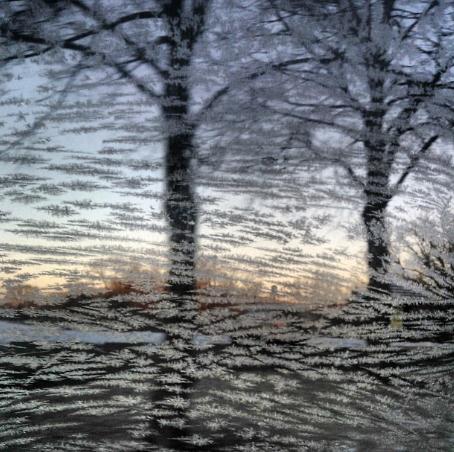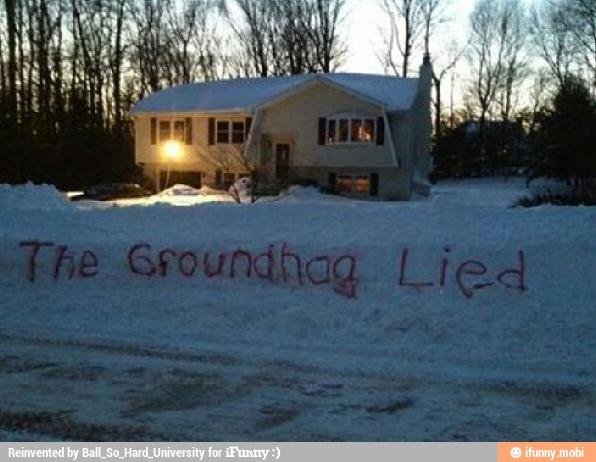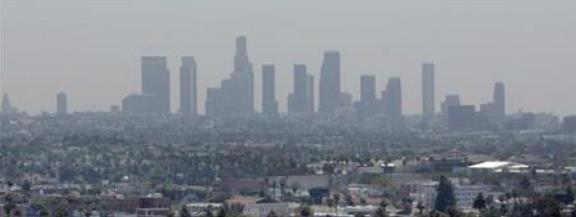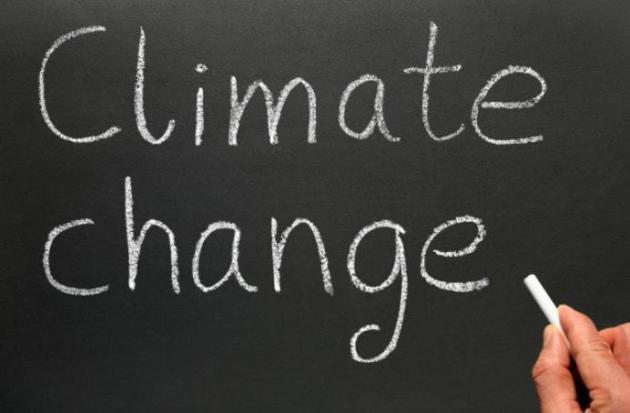24 F. average high on February 6.
37 F. maximum temperature on February 6, 2016.
February 7, 1857: A snowstorm dumps around 9 inches of snow at Fort Snelling.
We Could All Use a Great Big Serving of "Hygge"
Thanks to the interwebs I just discovered I have relatives in Denmark. My Danish relatives tap into secrets built up over many centuries, coping skills that help them thrive during the dark days of winter.
Residents of Denmark, the happiest nation on Earth (USA is number 13 by the way), rely on "hygge", which translates into connection, coziness, fellowship and optimism. Danes would argue that they CHOOSE to be happy.
Their advice: don't be a shut-in. Get outside. Go on walks, make time for friends, share meals, limit screen-time and get rid of objects that don't bring joy. Maybe take the initiative with friends & family you've lost touch with. Sounds like good advice to me.
Today's alleged storm is another flaky disappointment. A slushy coating is possible, but freeways should stay wet until after dark. Wednesday will feel like the dead of winter with obligatory wind-chill-babble (-10F) but 40s return Friday, with rain Saturday.
Much of February should feel like March with 30s and 40s as mild, Pacific winds blow across the USA. Will we see an early spring this year? Probably.

- Get out. Don’t be a shut in. Break out of your routine and seek warmth and companionship for cheap, good fun: a walk, a latte, singing at your place of worship. Get fresh air every day.
- Have frequent, low-key and unpretentious get-togethers. Employ soft lighting, good music and comfortable chairs.
- Start groups: Book clubs, salons, Bunco, mahjong as well as cooking, knitting and poker parties are wonderful ways to form lasting, monthly connections.
- Limit alone screen time, but do consider inviting friends for the Super Bowl, the Oscars, sporting events,Victoria, or any TV series that promotes a great discussion..."
Photo credit: Imara Hixon.
Road Conditions Noon Today.
Internal model ensembles show slushy roads from the Twin Cities to
Duluth, but mainly wet conditions from the Great Lakes and New England
into the Ohio Valley and Gulf Coast. A lot of rain on the map for early
February, and unusually far north. Heavy snow ices up roads across the
central Rockies. Source: Aeris Enterprise.
What February?
These temperatures are fairly typical - for the last half of March.
Wednesday will bring back memories of face-peeling cold, but by Friday
temperatures rebound well into the 40s, in fact ECMWF guidance keeps us
consistently in the 40s next week as Pacific air dominates the pattern
over much of the USA. 15-day temperature trend for MSP: WeatherBell.

Another Time Warp.
OK. I'm a little unnerved by all the rain and ice we're getting during
what is, on paper, the dead of winter. From nearly 1 inch of liquid
precipitation on Christmas Day to dribs and drabs of ice and rain in
January, and now more ice this morning - this pattern is taking the joy
out of celebrating snow. A coating of slush is possible today, freezing
solid tonight as temperatures tumble. Chattering teeth on Wednesday will
give way to a stretch of 30s and 40s as winter recedes north into
Canada for the better part of February. Love it or hate it - I'm just
the messenger.

Thursday Nor'easter?
What can possibly go wrong, and what time for snow lovers in the
northeast, where snow has been a no-show this winter. Expect rain today
as far north as Buffalo and Syracuse, but Thursday's system pushes
potentially heavy snow into Pennsylvania and New England with heavy ice
and rain along the immediate coast. Too early for details on timing or
amounts, but there may finally be something to track. Meanwhile another
series of storms pushes into California and the west coast; heaviest
precipitation amounts Wednesday into Thursday. NAM future radar product:
Tropicaltidbits.com.
Fleeting Winter Flashback.
Temperatures dip close to 0F Thursday morning in the Twin Cities with a
wind chill of -10 to -20F at the bus stop around 6 AM Thursday morning -
as cold as it gets all of February. Source: Aeris Enterprise.

84-Hour Snowfall Potential.
NOAA's 12 KM NAM model prints out a little snow for the Upper
Mississippi Valley Today, but the main event comes Thursday into early
Friday from Pennsylvania and northern New Jersey into New England.
Interior communities from Albany and Worcester to Manchester may pick up
a cool foot of snow by the end of the week.
A Big Deal - For Atlanta.
Models print out a coating to an inch of slush today as winds swing
around to the northwest and temperatures fall into the upper 20s.
Freeways stay mostly wet until after dark this evening when a rapid
temperature tumble will result in icy roads.
February is Missing in Action.
If the 2-week 500mb forecast verifies (big if) most of the USA and
central Canada will be bathed in unseasonable, March-like warmth.
Meteorological winter officially ends around March 1, but you could make
an argument that it will end 2-3 weeks early this year.
Analysis of Record Rains and Flooding Across Louisiana in August, 2016. USGS has an overview of new research here; a 36 page PDF is here: "Heavy
rainfall occurred across Louisiana and southwestern Mississippi in
August 2016 as a result of a slow-moving area of low pressure and a high
amount of atmospheric moisture. The storm caused major flooding in the
southern portions of Louisiana including areas surrounding Baton Rouge
and Lafayette. Flooding occurred along the rivers such as the Amite,
Comite, Tangipahoa, Tickfaw, Vermilion, and Mermentau Rivers. Over 31
inches of rain was reported in the city of Watson, 20 miles northeast of
Baton Rouge, La., over the duration of the event. Streamflow-gaging
stations operated by the U.S. Geological Survey (USGS) recorded peak
streamflows of record at 10 locations, and 7 other locations experienced
peak streamflows ranking in the top five for the duration of the period
of record..."

2 Remarkable Facts that Illustrate Solar Power's Declining Cost. Dave Roberts reports at Vox: "...The
costs of climate change are left out of these LCOE calculations. If
they were included — if a reasonable carbon tax were applied across the
electricity sector — it would obviously advantage renewables relative to
fossil fuels. (It would also improve the position of existing nuclear
plants.) Conversely, a unique challenge facing wind and solar is also
left out. Wind and solar are intermittent resources (the wind isn’t
always blowing, etc.), which means the more of them you add to the grid,
the more “firming” of the grid you need to compensate. That can be done
through flexible backup generation (usually natural gas), energy
storage, “load shifting” (moving demand to times of high wind/sun), or a
variety of other techniques.
Making the grid more flexible will come at some cost. It has to be done
eventually, and the end product will be much more effective, but
getting there will cost money. Wind and solar necessitate spending that
money..."
U.S. Utilities Seek Sun as Trump Sides with Coal, Fossil Fuels. The Associated Press reports: "The
plunging cost of solar power is leading U.S. electric companies to
capture more of the sun just when President Donald Trump is moving to
boost coal and other fossil fuels. Solar power represents just about 1
percent of the electricity U.S. utilities generate today, but that could
grow substantially as major electric utilities move into smaller-scale
solar farming, a niche developed by local cooperatives and non-profits.
It's both an opportunity and a defensive maneuver: Sunshine-capturing
technology has become so cheap, so quickly, that utilities are moving to
preserve their core business against competition from household solar
panels..."
File photo credit: Chris Carlson, AP.
Study: Storing Solar Power is a Bad Idea. The Houston Chronicle explains why that may be: "Many homeowners dream of installing solar panels on their roof tops, storing the electricity in batteries for nighttime use and then disconnecting from the power grid. It turns out, though, that we're better off staying connected than going it alone. Trying to store that energy in a battery pack actually does more harm to the environment than good, according to a new study by the University of Texas Energy Institute. Using solar panels while remaining on the grid makes much more sense. "The good news is that storage isn't required to make solar panels useful or cost-effective," said co-author Michael Webber, a professor in the Department of Mechanical Engineering and deputy director of UT Austin's Energy Institute. "This also counters the prevailing myth that storage is needed to integrate distributed solar power just because it doesn't produce energy at night..."
Image credit: "The Pilot translation kit comes from Waverly Labs and will be available from May."
People Who Drink Coffee May Live Longer. I knew there was a reason why I needed a small mortgage to pay my monthly Caribou tab. Here's an excerpt from Next Avenue: "For those of us who need a jolt of Joe to get the day started, who might sneak in a cup or two in the afternoon and have even been known to brew some dark roast late in the evening, it may be time to shed some of the guilt. Coffee could have a big upside. A Stanford University School of Medicine study in Nature Medicine last month is the latest to perk up the worried coffee drinker. It reported that caffeine consumption counters the chronic inflammation responsible for more than 90 percent of many cardiovascular and other age-related diseases such as cancer, Alzheimer’s and other dementias. Put more simply, coffee can slow down a widespread cause of human aging..." (Image credit: lefunny.net).
TODAY: Freezing Rain Advisory. Light mix of ice and snow. Coating of slush. Winds: NW 15-25. High: 32 (falling into the 20s by late afternoon)
TUESDAY NIGHT: Flurries taper - icy patches. Much colder. Low: 5
WEDNESDAY: Chilled sun, feels like 0 to -15F. Winds: NW 8-13. High: 12
THURSDAY: Partly sunny, still brisk. Winds: S 5-10. Wake-up: 1. High: 22
FRIDAY: Like turning on a light switch. Instant March. Winds: SW 10-15. Wake-up: 19. High: 45
SATURDAY: More clouds, a little light rain and drizzle. Winds: N 5-10. Wake-up: 31. High: 41
SUNDAY: Drier, sunnier and slightly cooler. Winds: NW 10-15. Wake-up: 27. High: 37
MONDAY: Peeks of sun, typical for March. Winds: W 8-13. Wake-up: 25. High: 43
Climate Stories...
Mail on Sunday Launches the First Salvo in the Latest War Against Climate Scientists. Dr. John Abraham at The University of St. Thomas has the story for The Guardian: "...The author of the recent attack piece, David Rose in the UK, has a history of denying the well-established science of climate change. He has a long history of making incorrect climate change statements. In the attack, Mr. Rose claims that scientists used misleading data in a recent (2015) paper that studied the rate of temperature change across the globe. He reportedly obtained information from someone who works at NOAA to imply that internal review procedures were not followed as the paper was prepared for publication. What Mr. Rose omitted however, is incredibly telling and he does a disservice to his readers. First, he neglects to mention that the work from the 2015 paper authored by Dr. Thomas Karl and others at NOAA has already been independently verified by other researchers. The second thing Rose neglects to mention is that his story’s source was never involved any part of the work..."
Article Names "Whistleblower" Who Told Congress NOAA Manipulated Data. Here's additional perspective from Ars Technica.
Photo credit: "Some of the 21 plaintiffs, along with attorneys and supporters, gather on the steps of the federal courthouse in Eugene, Oregon, after a hearing demanding the U.S. government take science-based action against climate change in March 2016." Robin Loznak/ZUMA PRESS.
What Future for Winter Tourism Under Global Warming? A few interesting nuggets in an interview at swissinfo.ch: "...Mild winters punish low and mid-altitude resorts, resulting in an inexorable decline in the number of skiers. To stay competitive, many resorts invest heavily in their ski lifts and artificial snowmaking. It is a strategy rejected by Clivaz, a professor at the Institute of Geography and Sustainability at the University of Lausanne, and co-author of the book "Winter Tourism: Climate Challenge". Christophe Clivaz: Climate models do show a gap in the arrival of snow at the beginning of the season. This trend will intensify in the future, although weather variations may be very different from year to year. These difficulties add to the rise in the snow-rain limit: since the 1960s, the zero-degree limit has risen by almost 300 metres in the Swiss Alps..."
Photo credit: "Christophe Clivaz says the massive investments needed to artificially make snow for the ski runs will only raise ski lift prices further." (Keystone)

Research Finds Hope in Slowing Arctic's Climate-Warming Black Carbon. New tools and methodologies can now trace where that soot is coming from, with surprising results, according to InsideClimate News: "...It's a new tool for understanding who is emitting what and when," he said. Black carbon can travel thousands of miles from where it is initially emitted, so finding the source of the pollution can make it more feasible for policymakers to attempt to stop it. The authors of the study gathered two years of black carbon data from eastern Siberia—a remote, sparsely populated region—and developed the method for determining the source. By analyzing the isotopes of the black carbon samples, the authors determined that black carbon in the region was coming primarily from transportation and home heating with coal or biomass. The isotope analysis was then compared with data from observation-based models and inventories of known emissions of black carbon..."
File photo: University of North Carolina.
How the World Passed a Carbon Threshold and Why It Matters. Yale E360 has the article; here's an excerpt: "...The last time the planet had a concentration of 300 to 400 ppm of CO2 in the atmosphere was during the mid-Pliocene, 3 million years ago — recently enough for the planet to be not radically different than it is today. Back then, temperatures were 2 degrees C to 3 degrees C (3.6 to 5.4°F) above pre-industrial temperatures (though more than 10 degrees C hotter in the Arctic), and sea levels were at least 15-25 meters higher. Forest grew in the Canadian north and grasslands abounded worldwide; the Sahara was probably covered in vegetation. Homo habilis (aka “handy man”), the first species in the Homo line and probably the first stone-tool users, got a taste of this climate as they arrived on the scene 2.8 million years ago. (Homo sapiens didn’t show up until 400,000 years ago at the earliest.)..."
Photo credit: "An Argo float being raised out of the Bellingshausen Sea is shown here. Argo floats are robotic instruments that measure ocean data and transmit it to satellites." Credit: fruchtzwerg's world/Flickr
No comments:
Post a Comment